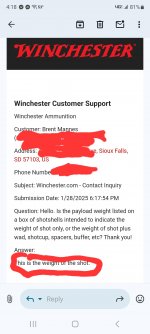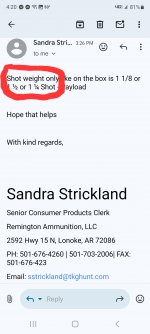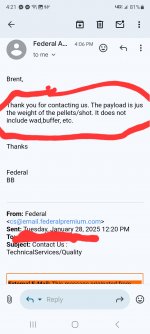A5 Sweet 16
Well-known member
How is that true when
KE = 1/2 x M x V^2
The kinetic energy that causes recoil varies directly with the mass and with the square of the velocity.
True, but there's quite a little bit involved with determining velocity of the gun. If you look above at the "simplified" formula I provided, the shot weight ends up getting squared too. It's not exactly a direct relationship (x% of one is worth x% of the other), but it's close. A % change in muzzle velocity does have slightly more effect on recoil energy than the same % change in shot weight, but it's almost insignificant. Here's a link for the weirdos like me, who love math.
(Note: in the formula I gave above, I used KEO's variable names for consistency. Not SAAMI's variable names. Same effect though.)
Attachments
Last edited:




